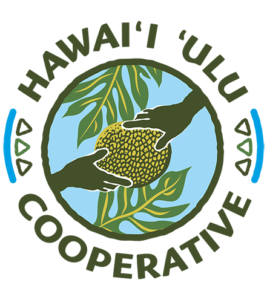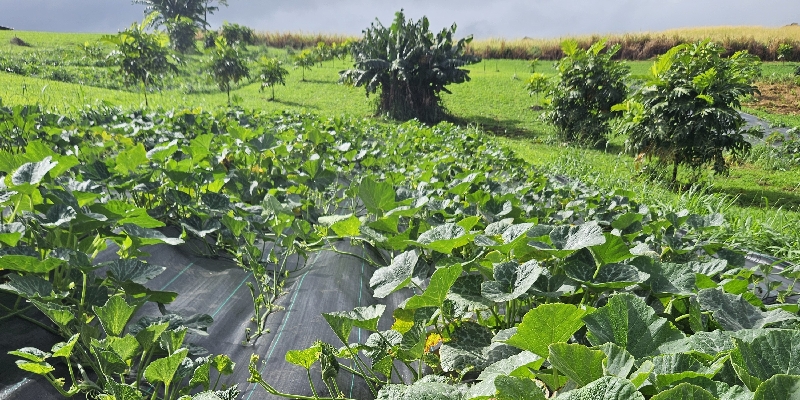
In our efforts to support increased production of Palaʻai for our members, we held a Palaʻai production workshop at the Hāmākua Institute in Papaʻaloa, Hawaiʻi Island, on January 11th, 2025. During this workshop, attendees learned about the challenges, nuances, and best practices for successfully growing Palaʻai and other squash. We heard from long-time Molokaʻi farmer, former UH Extension Agent, and squash connoisseur, Uncle GlennTeves, as well as a number of our own members currently producing Palaʻai. We also got our hands dirty helping direct seed a new trial field at the Hāmākua Institute.
This piece aims to summarize the new learnings as an update and expansion to our Palaʻai Production resources. For information on the basics of Palaʻai production in Hawaiʻi, please review part one of this resource. You can also find information on the nutrition, cooking, and the products we process Palaʻai into on our EatBreadfruit site.
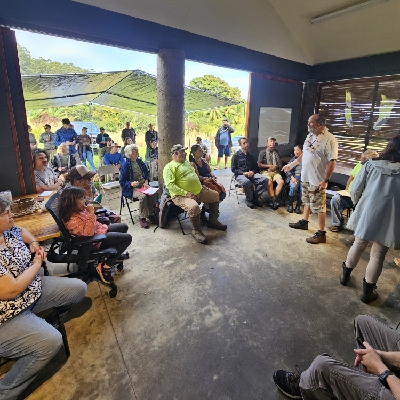
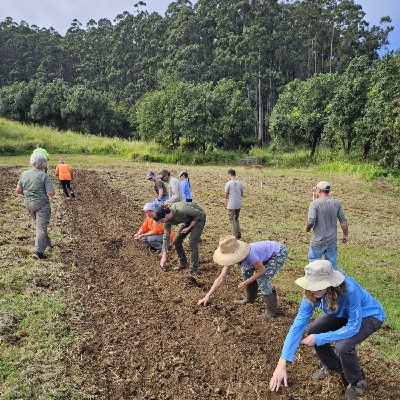
Varieties
One of the first things to understand when growing Palaʻai is that, as one of the most diversely domesticated crop species in the world, there are tons of varieties. While we loosely refer to both Pumpkin and Kabocha squashes as Palaʻai, Uncle Glen pointed out that they are technically two different species – Curcubita Maxima & Cucurbita Moschata. Furthermore, it’s also important to understand the distinction between “Winter Squashes”, which have a hard rind, and “Summer Squashes”, like Zucchini, which have a soft skin.
Maxima:
-
- Kabocha (and others)
-
- Smooth fruit, able to be peeled by our Ulu peeling equipment
-
- Generally less disease resistant than Moschata varieties
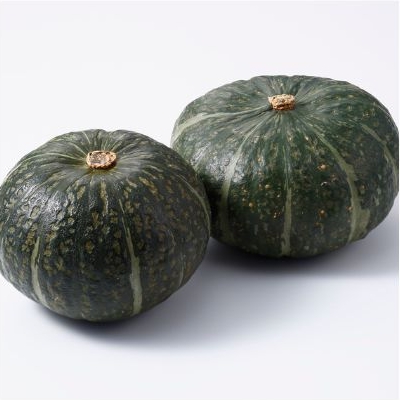
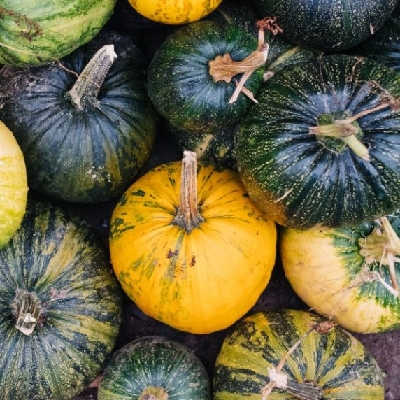
Moschata:
-
- Pumpkin (Palaʻai) (Calabaza)
-
- Fruit has ridges
-
- Generally higher nutritional density
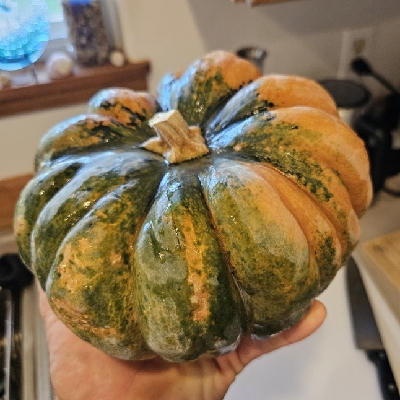
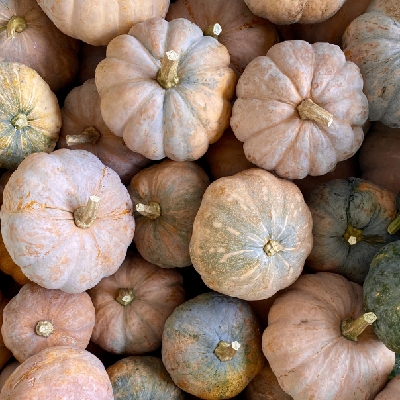
Regardless of which variety you prefer, with so many different micro-climates and soil types in Hawaiʻi, Uncle Glen emphasizes that it’s important to try more than one variety to see which grows best in your area and which you prefer (and save your seeds!).
Production
While the verdict is still out as to whether direct seeding or transplanting is best, it’s safe to say it comes down to your context. Some farmers report better results with transplanting squash starts, while others find the ease of direct seeding at scale to be a worthwhile trade-off.
Uncle Glenn says “Under high rainfall conditions, direct seeds can quickly be overrun with weeds, in which case transplanting seedlings can give you a head start. Seeding in cells 1/2 cup or larger can grow 4-6” starts that can outrun weeds. This may not be feasible if you’re planting large fields. Direct sowing seems to work best in the warmer days of the year from May to July when rains are infrequent, at least on Molokai. If planting into plastic mulch or weed mats, direct seeding is more affordable and the mats retain heat, called bottom heat, which can enhance germination and growth.”
-
- Pollination! No bees – No squash
-
- Enhance with buckwheat around production field
-
- 1/2 cup honey to 5 gal water, spray to attract bees for pollination
-
- Pollination! No bees – No squash
-
- Also seems to do well as a field boundary crop, likes to climb fences, trees, hills
-
- Good to grow at edge of farm so can spread out (utilize marginal areas)
-
- Many members report experiences with the magic “compost volunteer” squash
-
- Supports the idea that Palaʻai favors soil with high organic matter and microbial diversity
-
- Suggest applying compost
-
- Many members report experiences with the magic “compost volunteer” squash
-
- Try different varieties and planting practices or locations to find what combination is the most productive for your farm, don’t be discouraged if your first crop does not have high production
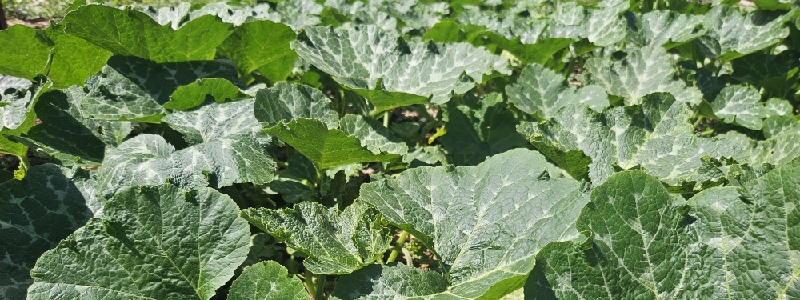
Pest & Disease
Pest damage is still reported as the largest challenge for members growing Palaʻai, in particular the pickleworm (Diaphania nitidalis), which also affects all Cucurbits like cucumbers, melons, and other squash. Generally, some form of pest control is necessary for reliable Palaʻai production in Hawaiʻi. One of the oldest tried and true IPM methods is the use of traps crops, which provide an alternative crop that the pests prefer. In the case of fruit flies, Corn and Sorghum Sudan Grass are great options. If your field happens to be surrounded by the notorious Koa haole, they are also known host sites of fruit flies.
While Uncle Glenn says “I don’t know the solution to pickleworm” he did offer some great advice on pest management.
-
- Pickle worm is the biggest production problem
-
- May be controlled using Pheromone lures & traps
-
- If you want to see them, 3 hours after sunset they are active for about 3-5hrs (worst during hot weather)
-
- Allow vines to grow among tall grass or up trees, seems to “hide” fruit from pest
-
- Pickle worm is the biggest production problem
-
- Mealworms are the biggest post-harvest problem
-
- Allow fruit stems to dry and harden to avoid damage to stored squash
-
- Mealworms are the biggest post-harvest problem
-
- Oriental fruit fly is the worst generalist
-
- Oriental fruit fly and Melon fly larvae also feed on young fruit
-
- Fruit that survives often shows damage as pockmark “wart” scars on fruit
-
- Plant in Winter or Spring to avoid fruit flies. Hot weather = more flies
-
- Methyl eugenol attracts male Oriental fruit flies
-
- Cue-lure attracts male Melon flies
-
- Torula yeast can also be used to attract multiple types of Fruit Flies
-
- Lures are used with traps such like the Amulet C-L (see the UH CTAHR study here)
-
- Oriental fruit fly is the worst generalist
-
- Viruses spread with aphids and white flies
-
- Other pests to watch out for include Rats
Members producing Palaʻai also report success with controlling pests by applying organic insecticidal products like Neem Oil or Spinosad.
Another potential solution worth considering to control Pickle worms, which we are not currently aware of anyone utilizing for Palaʻai production in Hawaiʻi, includes the use of Pheromone traps.
Harvest & Post-harvest
Knowing when to harvest your Palaʻai can be tricky at first, especially with the differences in varieties. If you intend to sell your harvest to the Cooperative, please be sure to familiarize yourself with our Harvesting Guidelines. In general, remember these few tips:
-
- Look for the Yellow belly and stem turning gray-brown
-
- Also dried tendrils are another sign of maturity
-
- Flick test – requires a bit of a trained ear, but there is a slight audible difference between immature and mature fruit as they develop a hollow seed cavity
-
- Post-harvest: cut stem and leave in the sun for 1 day, then wash and store in cool shady area for 1 month
-
- Monitor for Mealworms and mold at stems
-
- Post-harvest: cut stem and leave in the sun for 1 day, then wash and store in cool shady area for 1 month
Both Maxima and Moschata varieties undergo changes during storage as they naturally convert starches to sugars. Uncle Glenn was sure to note that they are generally sweetest about 1 month after harvesting, adding that his favorite Palaʻai dish was Pinakbet – a traditional Filipino stir-fry or stew.
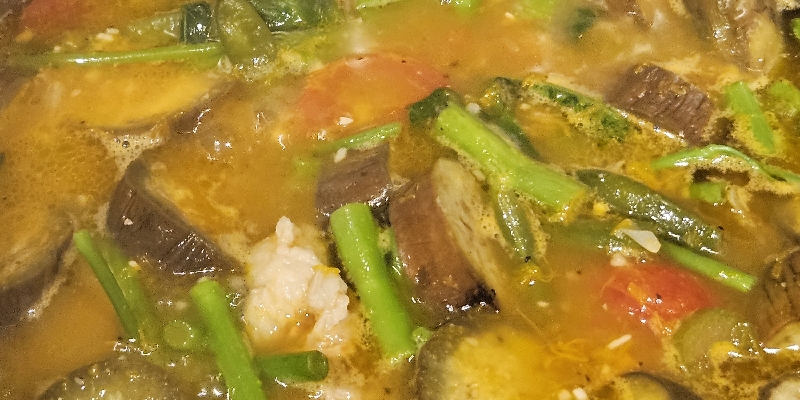
Support the Cooperative!
If you are interested in selling your Palaʻai, please consider contacting our team, or entering a Marketing Agreement for deliveries over 1,000 lbs annually. Crop purchase prices can be found here.
Mahalo
We are very grateful for Uncle Glenn Teves of Molokaʻi, and Dennis Flemming of the Hāmākua Institute for helping host the Palaʻai production workshop of January 2025, as well as all our members who shared their production techniques and experiences that help to inform the greater farming community of Hawaiʻi. Happy growing!
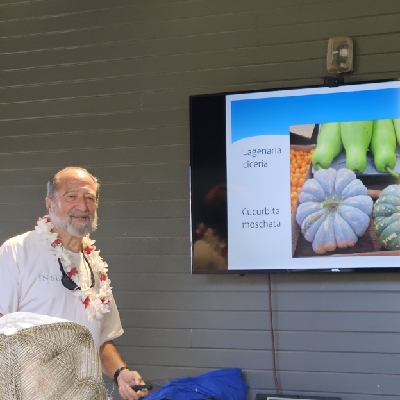
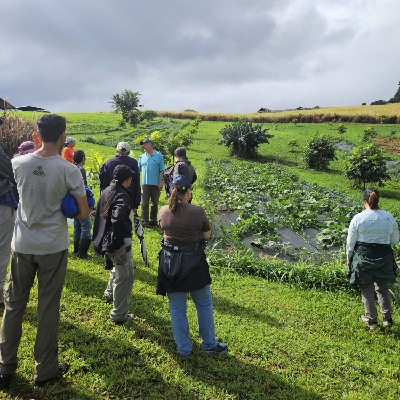
Additional Resources
– Palaʻai Production in Hawaiʻi – Part 1
– Palaʻai Harvesting Guidelines
